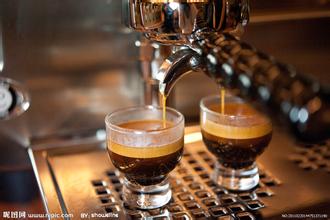Introduction to the characteristics of producing areas for describing the Flavor of High-quality Coffee beans in Valenford Manor, Jamaica
It is transversely rectangular with a ratio of 2 ∶ 1 to width. Two yellow wide stripes of equal width divide the flag into four equal triangles along the diagonal, green at the top and black at the left. Yellow represents the country's natural resources and sunshine, black symbolizes the difficulties that have been overcome and is about to face, and green symbolizes hope and the country's rich agricultural resources.
National emblem: the middle of the pattern is the shield emblem, there is a red cross on the white shield, and five golden pineapples are arranged on the Red Cross. The upper end of the shield emblem is a helmet with a yellow-and-white Corolla on both sides; the helmet is covered with a piece of wood on which is a crocodile with its mouth open. The shield emblem is flanked by Indians, the strong man on the right holds a bow, and the young woman on the left holds a basket of pineapples. The administrative division of "Outstanding, one Nation" is written on the lower ribbon in English: Cornwall, Middlesex and Surrey. The three counties are further divided into 14 districts, of which Kingston and St. Andrews form a joint district, so there are actually only 13 district governments. The names of the districts are as follows: United District of Kingston and St. Andrew, St. Thomas, Portland, St. Mary, Santa Ana, Trelawney, St. James, Hanover, Westmorland, St. Elizabeth, Manchester, Clarendon, St. Catherine.
Brief history: it used to be the residence of the Indian Arawak people. Columbus discovered the island in 1494. It was colonized by Spain in 1509. The British occupied the island in 1655. It became one of the British slave markets from the end of the 17th century to the beginning of the 19th century. England proclaimed the abolition of slavery in 1843. It became a British colony in 1866. Joined the Union of the West Indies in 1958. Internal autonomy was obtained in 1959. He withdrew from the Union of the West Indies in September 1961. Declared its independence on August 6, 1962 and became a member of the Commonwealth.
In 1950, the Government of Jamaica established the Jamaica Coffee Industry Committee (the Jamaica Coffee Industry Board), which sets quality standards for Jamaican coffee and oversees the implementation of quality standards to ensure the quality of Jamaican coffee. The Commission awarded special official seals to raw and roasted coffee exported from Jamaica, which is the highest-level national coffee institution in the world. Can represent the origin of Blue Mountain Coffee. There are six signs: Mafis River Embankment Coffee Factory Mavis Bank Coffee Factory (M.B.C.F), Blue Mountain Coffee Co-operative Factory (M.H.C.C.T.), Portland Blue Mountain Coffee Cooperative Factory (P.X.X.S.H.), Coffee Industry Association (Wallenford), Coffee Industry Association (St. John's Peak) and Lanli (J.A.S). Blue Mountain Coffee is the best coffee in the world. Geological structure and topography together provide an ideal place. The ridge that runs through Jamaica extends to the eastern part of the island, with the Blue Mountains rising to more than 2100 meters. Cool weather, foggy, frequent precipitation, use this rich soil Rain Water to reconcile. Here, a mixed planting method is used to grow coffee trees to accompany banana trees and avocado trees on terraces. Some small estates are also planted. But even the largest landowners in the region are small-scale growers by international standards, many of whom are small landowners whose families have been working for two centuries. The coffee industry in Jamaica faces a series of problems, such as the impact of hurricanes, increased labor costs and difficult mechanization of terraces. Many small estates and farms are difficult to rationalize.
As Japan has always invested in the Jamaican coffee industry, Blue Mountain Coffee is mostly owned by the Japanese, and they have also obtained the right of preemption of Blue Mountain Coffee. In 1992, Jamaica sold 688 tons of Blue Mountain coffee to Japan, 75 tons to the United States and 59 tons to Britain. 90% of Blue Mountain coffee is bought by the Japanese. Since the rest of the world can only get 10% of Blue Mountain, regardless of the price, Blue Mountain coffee is always in short supply.

Important Notice :
前街咖啡 FrontStreet Coffee has moved to new addredd:
FrontStreet Coffee Address: 315,Donghua East Road,GuangZhou
Tel:020 38364473
- Prev

Jamaica Cliff Manor Coffee Variety Fine Coffee Bean Flavor Description
Columbus arrived in Jamaica in 1494, and Spain claimed Jamaica as its colony in 1509 and renamed it Santiago. Spain's policy of slavery towards the indigenous population led to the extinction of the Arawak people on the island as a result of war, disease and slavery. To supplement Jamaica's Jamaica labor force, Spain began selling slaves from Africa to Jamaica in 1517, resulting in
- Next

Introduction to the description of the characteristics and flavor of boutique coffee beans in the coffee variety producing area of Joy Manor, Nicaragua
Lake Nicaragua is the largest lake in Central America, located in southwestern Nicaragua. The local Indians call it Lake Corsi Walka, which means freshwater sea. Lake Nicaragua is 160km long, with an average width of 60km and an area of 8264 square kilometers. Tens of thousands of years ago, Lake Nicaragua was an bay of the Pacific Ocean, cut off from the sea by volcanic eruptions. With the passing of the sun and moon, the water of the lake gradually
Related
- Does Rose Summer choose Blue, Green or Red? Detailed explanation of Rose Summer Coffee plots and Classification in Panamanian Jade Manor
- What is the difference between the origin, producing area, processing plant, cooperative and manor of coffee beans?
- How fine does the espresso powder fit? how to grind the espresso?
- Sca coffee roasting degree color card coffee roasting degree 8 roasting color values what do you mean?
- The practice of lattes: how to make lattes at home
- Introduction to Indonesian Fine Coffee beans-- Java Coffee producing area of Indonesian Arabica Coffee
- How much will the flavor of light and medium roasted rose summer be expressed? What baking level is rose summer suitable for?
- Introduction to the characteristics of washing, sun-drying or wet-planing coffee commonly used in Mantenin, Indonesia
- Price characteristics of Arabica Coffee Bean Starbucks introduction to Manning Coffee Bean Taste producing area Variety Manor
- What is the authentic Yega flavor? What are the flavor characteristics of the really excellent Yejasuffi coffee beans?

